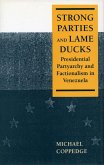This study analyzes the theories of Pragmatic Communications, Cybernetics, and Perturbation under the framework of the Pragmatic Complexity Model to illustrate how two Presidential administrations beginning in the 20th and 21st centuries used 'new media'; and systems thinking to communicate to both international and domestic audiences. Moreover, the study provides examples of how each used narratives to counter opposing ideologies. Similarly, this monograph explores two notions of Chinese thought, potential and propensity, which prove useful for studying diplomacy and strategic communication. The monograph explains why a systems approach coupled with cybernetics is the future for strategic communication, why the Pragmatic Complexity Model proves a plausible replacement for the 20th century Message-Influence Model, and how 'new media'; technology provides better opportunities to compete in the global "war of ideas." The analysis of the Pragmatic Complexity Model reveals four core principles that should be adopted: 1) control of message is impossible; 2) less messaging is better; 3) the intent is not to persuade or influence audiences, rather perturb stable system structures; and 4) expect messages to fail rather than succeed, signaling the need for message contingencies. Nested within this model are elements of complex adaptive systems theory, emergence, and the vital importance of understanding the global information environment's propensity to produce emergent properties and added degrees of risk when looking for choices of intervention. Two Presidential Administrations in the 20th and 21st centuries were explored. The first case study focused on President Theodore Roosevelt, the significance of the Panama Canal, and his use of the "Great White Fleet" to communicate to both international and domestic audiences'; American ingenuity and the nation's ability to project power. Each of these events in history were inputs into the global information environment and demo This work has been selected by scholars as being culturally important, and is part of the knowledge base of civilization as we know it. This work was reproduced from the original artifact, and remains as true to the original work as possible. Therefore, you will see the original copyright references, library stamps (as most of these works have been housed in our most important libraries around the world), and other notations in the work. This work is in the public domain in the United States of America, and possibly other nations. Within the United States, you may freely copy and distribute this work, as no entity (individual or corporate) has a copyright on the body of the work. As a reproduction of a historical artifact, this work may contain missing or blurred pages, poor pictures, errant marks, etc. Scholars believe, and we concur, that this work is important enough to be preserved, reproduced, and made generally available to the public. We appreciate your support of the preservation process, and thank you for being an important part of keeping this knowledge alive and relevant.
Bitte wählen Sie Ihr Anliegen aus.
Rechnungen
Retourenschein anfordern
Bestellstatus
Storno








